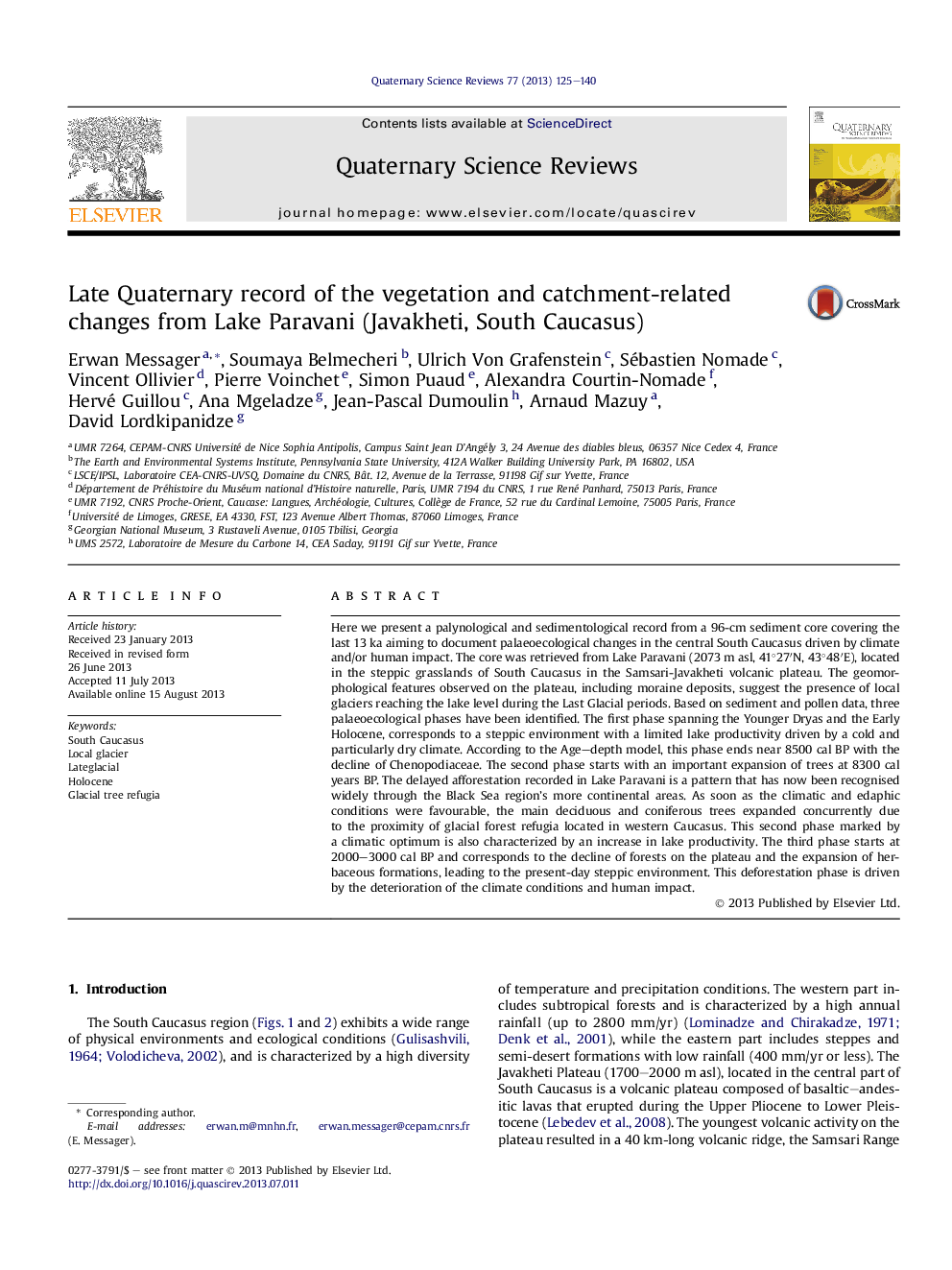| کد مقاله | کد نشریه | سال انتشار | مقاله انگلیسی | نسخه تمام متن |
|---|---|---|---|---|
| 6446552 | 1640857 | 2013 | 16 صفحه PDF | دانلود رایگان |
عنوان انگلیسی مقاله ISI
Late Quaternary record of the vegetation and catchment-related changes from Lake Paravani (Javakheti, South Caucasus)
ترجمه فارسی عنوان
سابقه کواترنر پس از تغییرات پوشش گیاهی و حوضه از دریاچه پاراوانی (جاواشی، قفقاز جنوبی)
دانلود مقاله + سفارش ترجمه
دانلود مقاله ISI انگلیسی
رایگان برای ایرانیان
کلمات کلیدی
قفقاز جنوبی، یخچال طبیعی گل سرخ هولوسن، پناهگاه درخت یخبندان،
موضوعات مرتبط
مهندسی و علوم پایه
علوم زمین و سیارات
زمین شناسی
چکیده انگلیسی
Here we present a palynological and sedimentological record from a 96-cm sediment core covering the last 13 ka aiming to document palaeoecological changes in the central South Caucasus driven by climate and/or human impact. The core was retrieved from Lake Paravani (2073 m asl, 41°27â²N, 43°48â²E), located in the steppic grasslands of South Caucasus in the Samsari-Javakheti volcanic plateau. The geomorphological features observed on the plateau, including moraine deposits, suggest the presence of local glaciers reaching the lake level during the Last Glacial periods. Based on sediment and pollen data, three palaeoecological phases have been identified. The first phase spanning the Younger Dryas and the Early Holocene, corresponds to a steppic environment with a limited lake productivity driven by a cold and particularly dry climate. According to the Age-depth model, this phase ends near 8500 cal BP with the decline of Chenopodiaceae. The second phase starts with an important expansion of trees at 8300 cal years BP. The delayed afforestation recorded in Lake Paravani is a pattern that has now been recognised widely through the Black Sea region's more continental areas. As soon as the climatic and edaphic conditions were favourable, the main deciduous and coniferous trees expanded concurrently due to the proximity of glacial forest refugia located in western Caucasus. This second phase marked by a climatic optimum is also characterized by an increase in lake productivity. The third phase starts at 2000-3000 cal BP and corresponds to the decline of forests on the plateau and the expansion of herbaceous formations, leading to the present-day steppic environment. This deforestation phase is driven by the deterioration of the climate conditions and human impact.
ناشر
Database: Elsevier - ScienceDirect (ساینس دایرکت)
Journal: Quaternary Science Reviews - Volume 77, 1 October 2013, Pages 125-140
Journal: Quaternary Science Reviews - Volume 77, 1 October 2013, Pages 125-140
نویسندگان
Erwan Messager, Soumaya Belmecheri, Ulrich Von Grafenstein, Sébastien Nomade, Vincent Ollivier, Pierre Voinchet, Simon Puaud, Alexandra Courtin-Nomade, Hervé Guillou, Ana Mgeladze, Jean-Pascal Dumoulin, Arnaud Mazuy, David Lordkipanidze,
